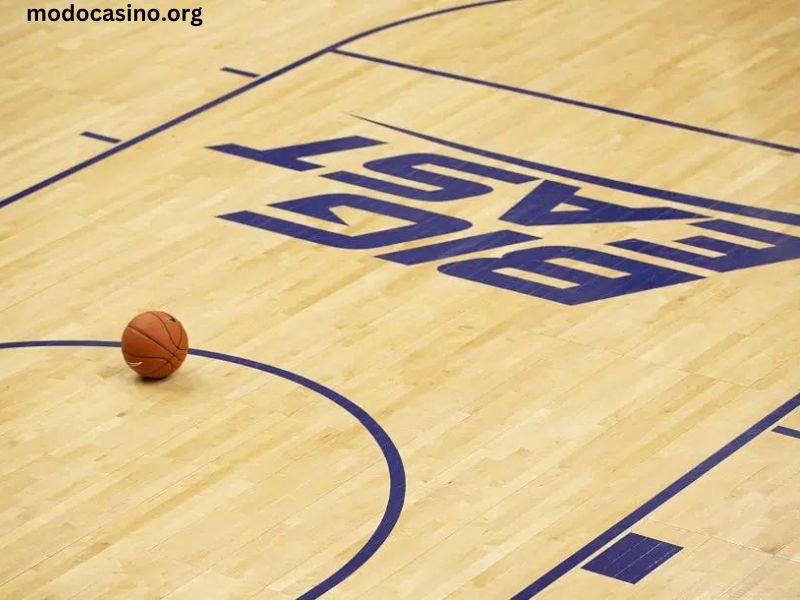College basketball is a thrilling sport, characterized by fast-paced action, strategic plays, and intense competition. For fans and newcomers alike, one common question arises: How long does a college basketball game last? The answer involves understanding various components, including game structure, stoppages, and overtimes. This article provides a comprehensive overview of the factors affecting the duration of a college basketball game.
Game Structure and Duration
A standard college basketball game consists of two halves, each lasting 20 minutes. Unlike the NBA, which uses four quarters of 12 minutes each, college basketball opts for two halves. This difference in structure affects the overall length of the game. Here’s a breakdown of the time components involved:
- Regulation Time: The core playing time of a college basketball game is 40 minutes, divided into two 20-minute halves. This format is designed to encourage continuous play and maintain a fast pace.
- Halftime Break: Between the two halves, there is a halftime break lasting 15 minutes. This interval allows teams to regroup, make adjustments, and for fans to take a break. The length of the halftime break can vary in certain tournaments or special games, but 15 minutes is the standard.
Game Stoppages and Timeouts
During the 40 minutes of regulation time, several factors can extend the total duration of the game:
- Timeouts: Each team is allotted a certain number of timeouts per game. In NCAA basketball, teams get four timeouts during regulation. Each timeout lasts 30 seconds or 60 seconds, depending on the type of timeout. Additionally, there are media timeouts called by the officials during breaks in play, especially in televised games. These media timeouts occur approximately every four minutes of play and last for around two minutes.
- Fouls and Free Throws: Fouls can interrupt the flow of the game, leading to free throws, which can add time. When a team is in the bonus situation (after committing a certain number of team fouls), free throws are awarded for non-shooting fouls. This situation can extend the game, especially if teams are fouling intentionally towards the end.
- Injuries and Reviews: Injury timeouts or delays for video reviews can also prolong the game. If a player is injured, the game stops while medical staff attend to the player. Video reviews, used to check controversial calls or ensure accurate game outcomes, can add several minutes to the game’s duration.
Overtime Periods
If the game is tied at the end of regulation, overtime periods are used to determine the winner. Each overtime period lasts 5 minutes. There is no halftime break between the end of regulation and the start of overtime, though teams get a brief pause to regroup. If the score remains tied after the first overtime, additional overtime periods are played until a winner is determined.
The length of an overtime period is relatively short, but multiple overtimes can significantly extend the total game duration. While most games are decided within the initial regulation time or one overtime, extended overtime games can last well beyond the typical duration.
Game Flow and Fan Experience
While the official game time is 40 minutes, the total time spent at a college basketball game is longer when considering the additional elements:
- Pre-Game and Post-Game Activities: Fans often arrive early for pre-game activities, including warm-ups and team introductions. Post-game activities, such as player interviews and fan interactions, can also extend the overall experience.
- Game Atmosphere: The intensity of the game, including strategic timeouts and substitutions, contributes to the flow and duration. Coaches and players utilize timeouts to make strategic adjustments, which adds to the excitement and extends the game time.
- TV Broadcasts and Commercials: For televised games, commercial breaks and TV timeouts can also affect the length of the game. Broadcasters schedule timeouts to air advertisements, which can add several minutes to the overall viewing time.
Comparative Analysis
To better understand how the duration of a college basketball game compares to other sports, it’s helpful to look at similar team sports:
- NBA Basketball: NBA games are divided into four 12-minute quarters, totaling 48 minutes of regulation time. Overtime periods in the NBA are also 5 minutes each. The additional commercial breaks and game stoppages typically make NBA games longer than college games.
- NFL Football: NFL games have a regulation time of 60 minutes, divided into four 15-minute quarters. Overtime periods in the NFL last 10 minutes. The combination of quarter breaks, halftime, and commercial breaks results in a significantly longer game duration compared to college basketball.
- Soccer: Soccer games consist of two 45-minute halves, totaling 90 minutes of regulation time. Additional stoppage time and potential overtime periods in knockout stages can extend the game’s total length, but generally, soccer games are shorter in terms of active play compared to basketball.
Conclusion
In summary, a standard college basketball game lasts 40 minutes of regulation time, divided into two 20-minute halves. However, considering the halftime break, timeouts, fouls, injuries, and potential overtime periods, the total duration of a college basketball game can extend to about 2 to 2.5 hours. The length can vary based on the pace of play, game stoppages, and whether overtime is needed to determine the winner. Understanding these factors provides a clearer picture of the time commitment involved in watching or participating in a college basketball game.




